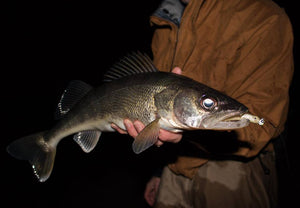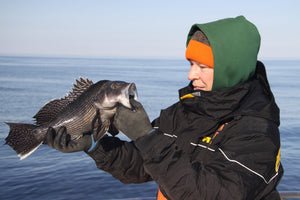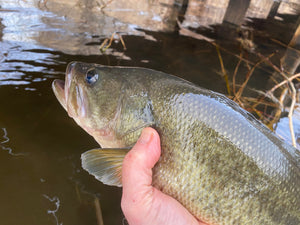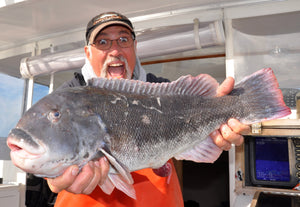HIT TIDAL CREEKS FOR SPRING’S SCHOOLIE STRIPERS
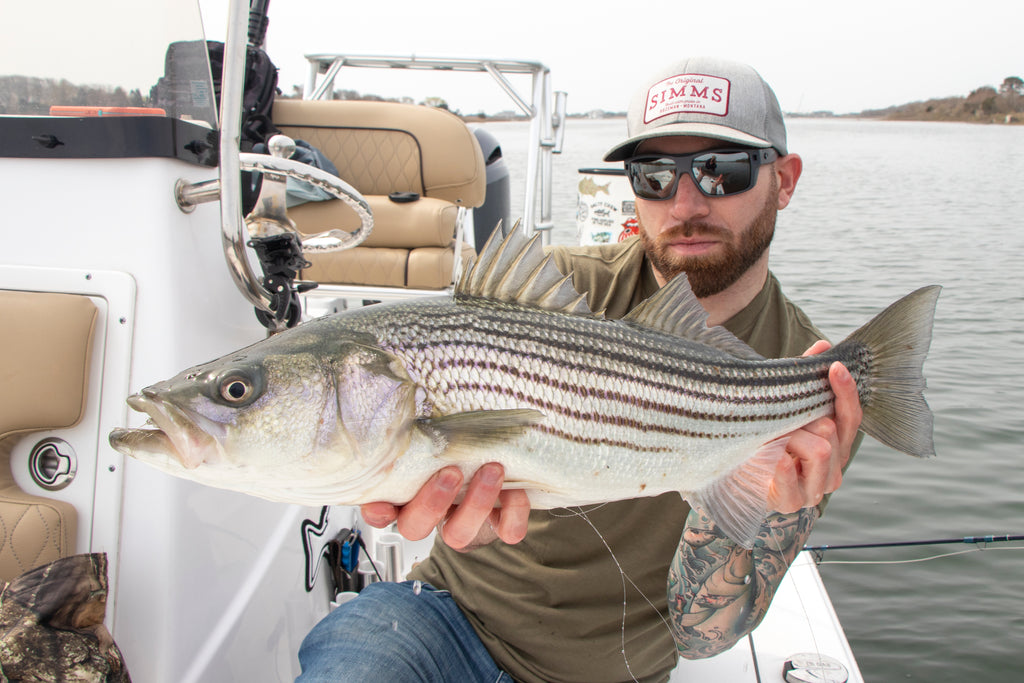
HIT TIDAL CREEKS FOR SPRING’S SCHOOLIE STRIPERS
By Staff
Up and down the striper coast small tidal creeks etch themselves across the map, snaking their way into the mainland from bays and harbors or even larger bodies of water like Long Island Sound. Early season stripers love to visit these waters and offer a ton of light-tackle catch and release potential. The past few seasons have seen an excellent run develop in May, with most schoolies measuring in the 14- to 24-inch class but an occasion larger fish – maybe even a keeper or two – pulled from the deeper pockets, at creek mouths and around bridge abutments. Once underway, the action can be found both day and night if you time the tide right, with the start of outgoing water usually the focal point.
As a rule, this is light-tackle fishing for lightweight linesiders but on eight- to 12-pound test spinning gear, or even a seven-weight fly rod if you dare. Freshwater bass fishing gear is a perfect match to this kind of fishing. While tidal bassing might not hold the interest of a die-hard trophy hunter – there are, after all, some fish in the 20-poiund class already available in more open back bay waters - it is a jumpstart for novice anglers to begin to learn the ways of stripers and makes a great entry point for introducing youngsters to the fishing game, especially with the emphasis on letting your catch go. It’s also just a great way to wet a line and bend your rod should you only have an hour or two to break away from your daily grind.

SMALL BAIT IS KEY
The key to finding bass in your local tidal creek is to locate the bait. Spearing, grass shrimp, cinderworms, and other small, slender baitfish like pile into some creeks on rising tides while seemingly avoiding others. Find the creeks with the most bait and you’ll probably find the bass as well. To locate the bait, you’ve got to scout. One way that works great is to cruise these areas after dark, by boat or by foot, checking shadow lines and lighted sections on calm nights. If the shiners are present, you’ll see them schooled up in lighted areas, perhaps even dimpling the surface. Look for baitfish to also be tightly schooled around bends and near the mouth of any creek just inside of where it connects with open water.
Because most tidal creeks are relatively shallow, you’ll want to hit these fishy hot spots at first light, dusk, after dark or under heavy cloud cover. Even small stripers tend to shy from direct sunlight, and this can be especially so during the early season before plankton blooms begin to cloud the water. Trying to stay out of the sun also leads the stripers to the deepest holes up tight against structure. Look for drop-offs in creek bends or pinch points with plenty of shade, such as those created by bridges, and you should stumble across more than a few fish.
Another important consideration in finding creek bass is tidal stage. Generally speaking, the start of outgoing water produces best because it begins to pull baitfish from the shallows and ushers them into the main channels to create a giant chum slick. Put the right tidal stage together with plenty of bait and low low-light conditions and you’ve got the ingredients for some explosive fishing.
DAY VS NIGHT
Because the waters can move swiftly around bridges and pinch points, these are good places to try tins, round-head bucktails and soft plastics impaled on lead heads such as a small Lunker City Fin-S-Fish, Storm WildEye Shad, 5-inch Shad Assassin or 4-inch Al Gag’s Whip-It Fish. If working from a boat, try casting one-half-ounce bucktails tipped with red, yellow or white Fat Cow Eel Tail Jig Strips slightly up-current from the target. From shore, quarter your casts up-current, then allow the lure to sink and come about before working it slowly toward the beach. From either boat or shore, be certain to keep your offering about a foot off the bottom unless you see the fish breaking or cruising on top.
During daylight hours a small WildEye Shad, Fin-S-Fish or a 4-inch Berkley Gulp! Swimming Mullet impaled on one-quarter-to one-half ounce white or chartreuse bucktail works great. After dark, try a four-inch, white soft plastic jerkbait on a half-ounce jig heads or 4-inch Yo-Zuri Mag Minnow worked just fast enough to keep the line tight. Full moon nights often a shot at surface action, so bring along a small Super Strike Little Neck popper or three-quarter-ounce Creek Chub Striper Strike popper and tie it on if you hear a little splashing beyond the shadow lines.

The vast majority of tidal creek bass you’ll encounter are schoolies. Be sure to crush down your barbs for quick and easy releases. Photo by OutdoorTom.com.
FINDING THE CREEKS
Any good map will, internet or print, will show any significant local tidal creek in fairly good detail. If you are new to tidal creek bassin’ be sure to do a bit of prospecting during daylight hours to sure up your game plan before making a late-night trip. This is best accomplished at dead low tide, the primary reason being that any place you can get into and out of at this tidal stage will be safe to fish on rising water, and the secondary reason being that any deep holes you find will be even deeper at the start of outgoing water.
Since Mother’s Day through early June sees this action at its peak, the time to get out and test your local waters is already at hand. There are dozens of productive tidal creeks along the Long Island coast so grab a friend and give it a try. You’ll find the schoolies both receptive and feisty this time of year, and perfect for providing a quick fishing fix when you only have a small window of free time to get out on the water.
- Bryce Poyer


